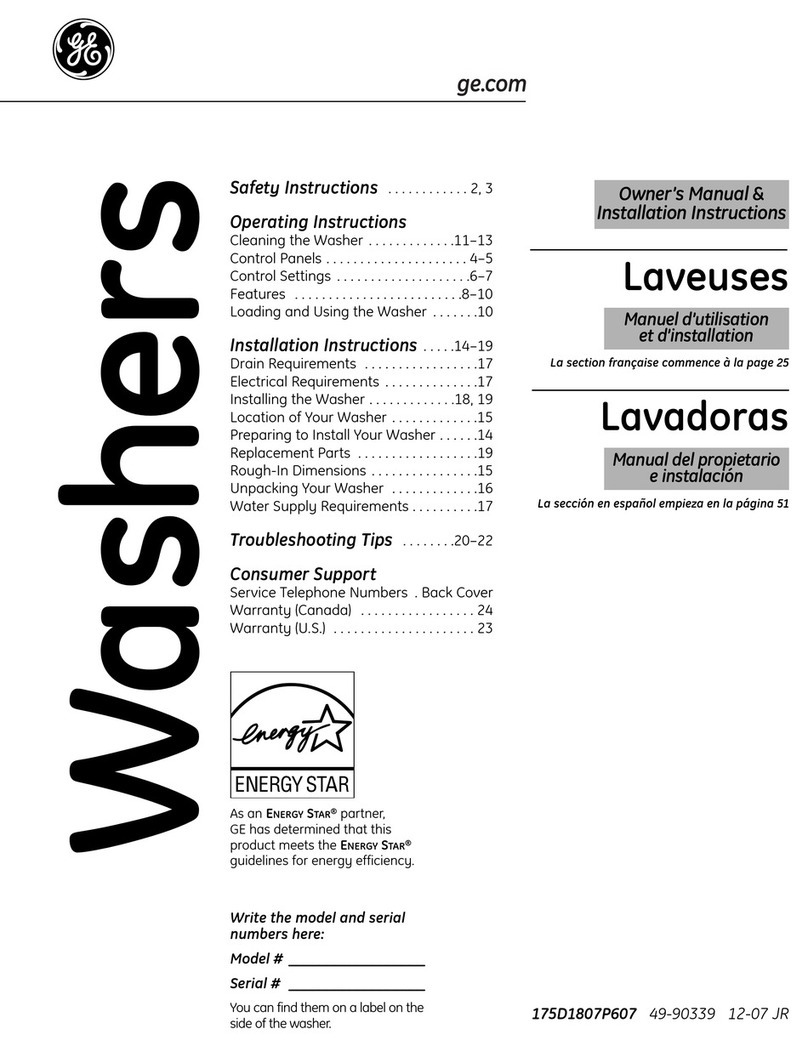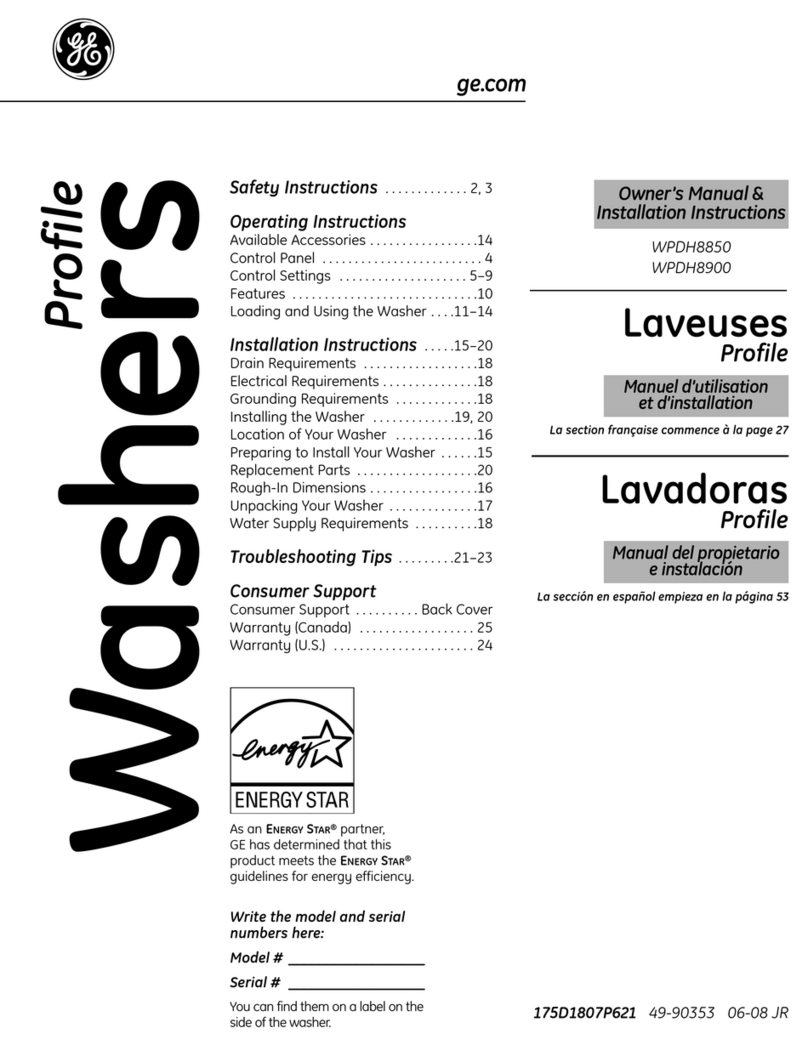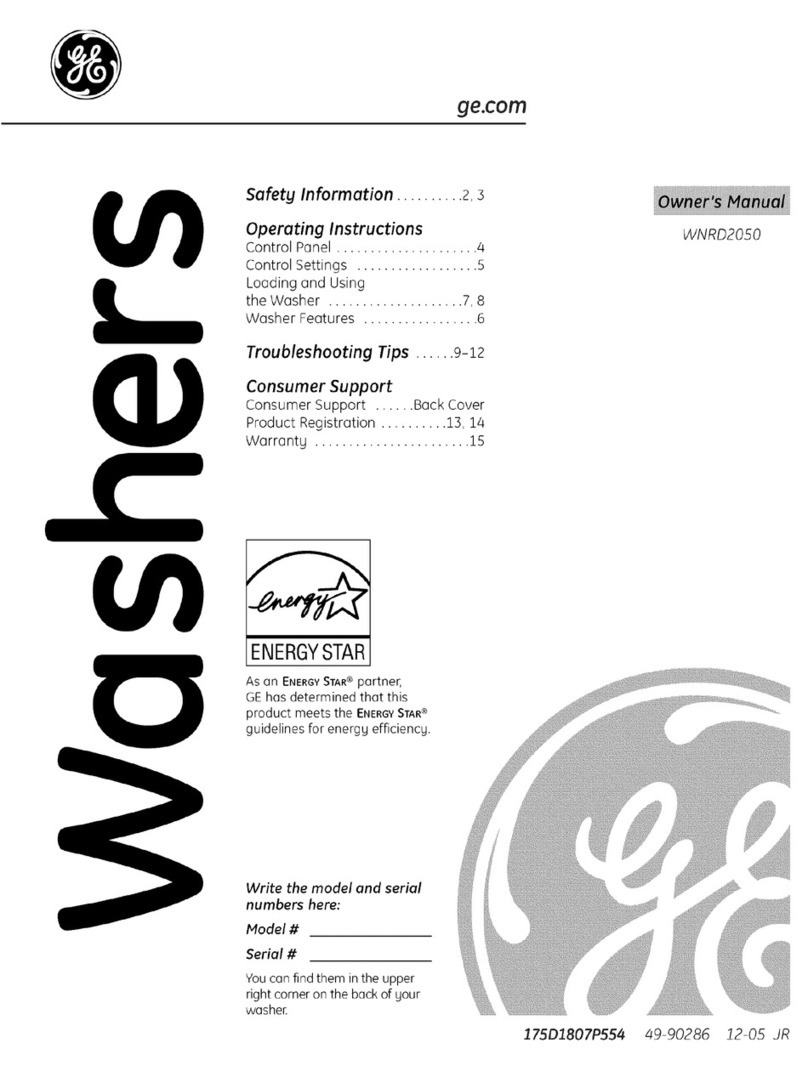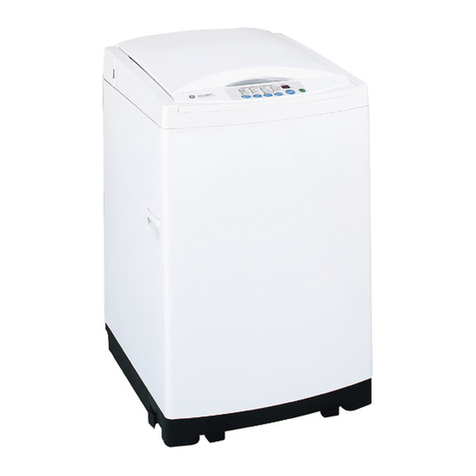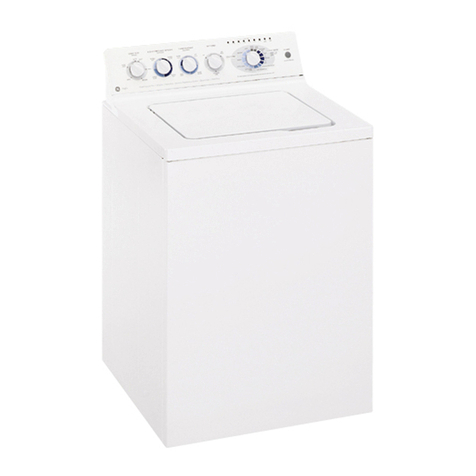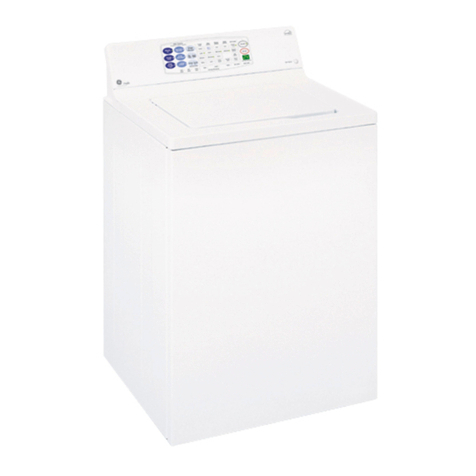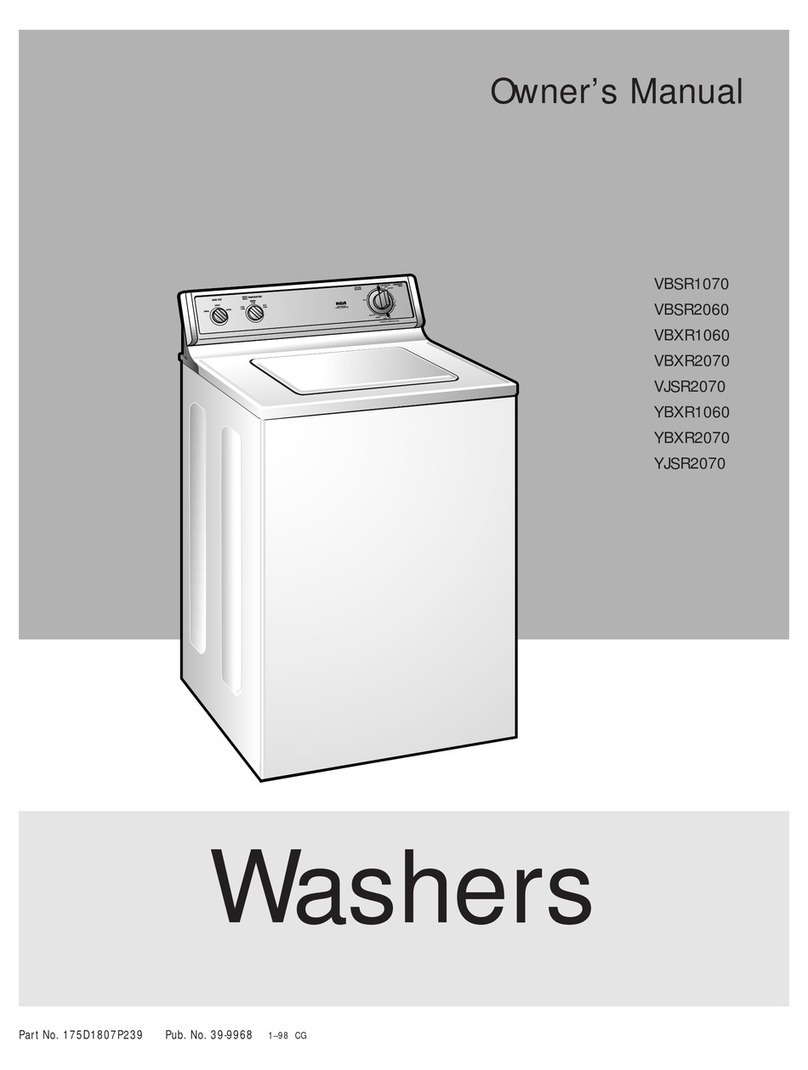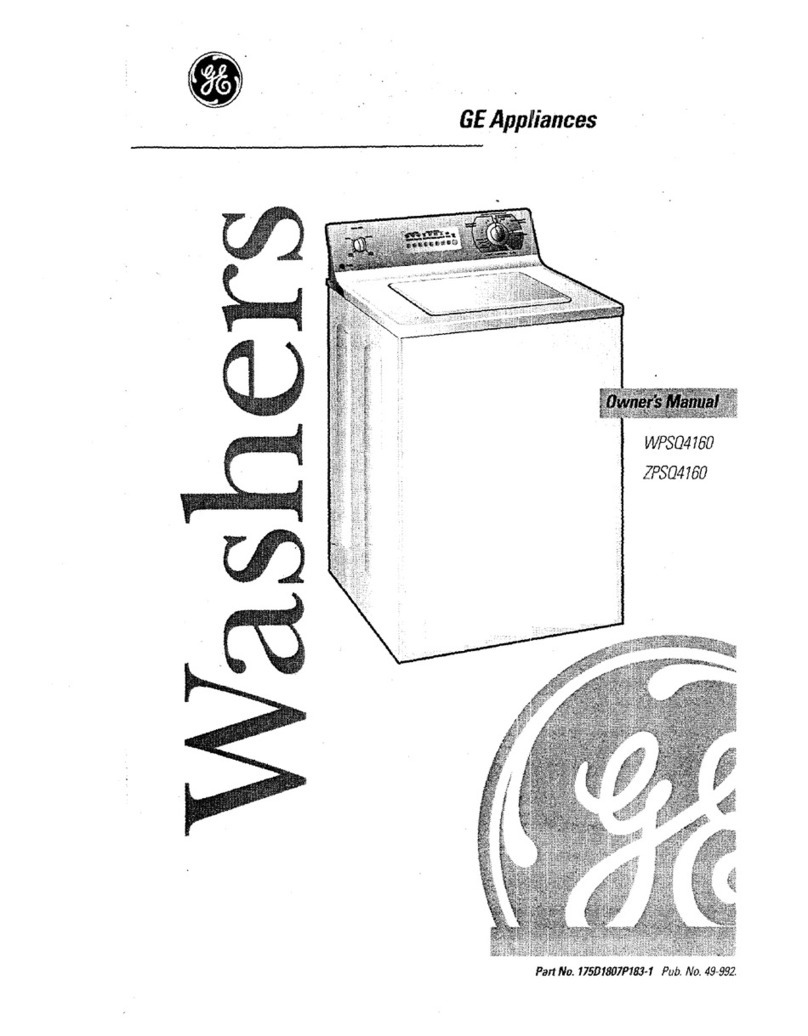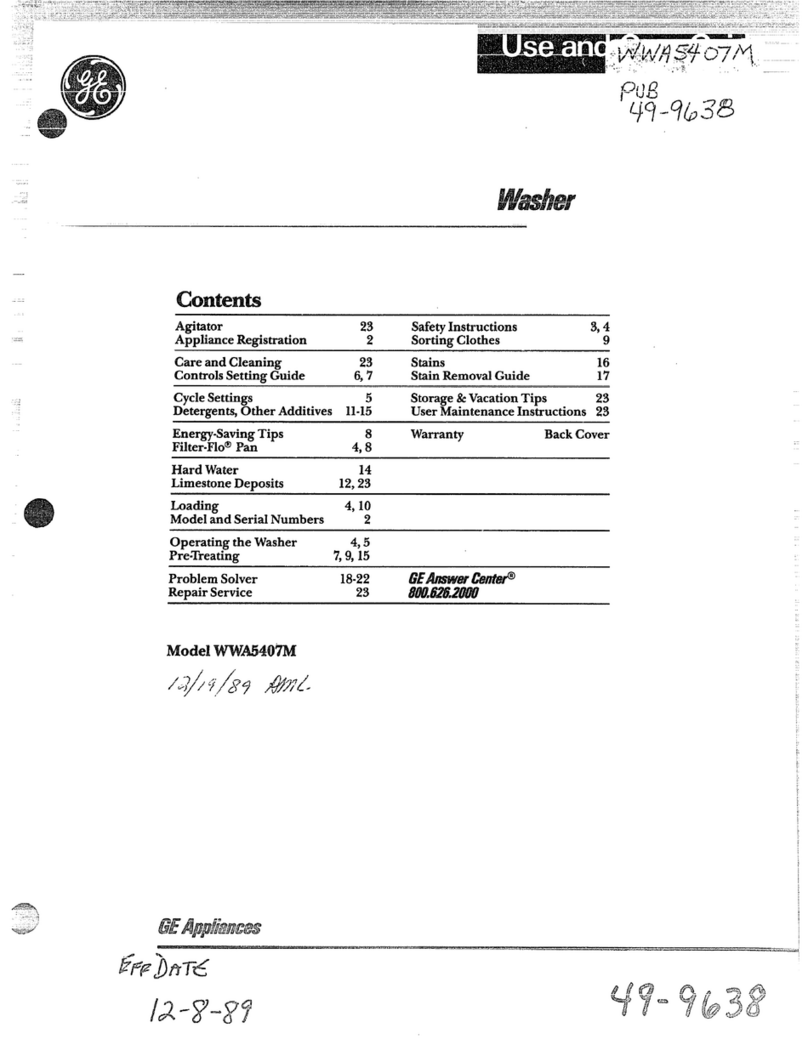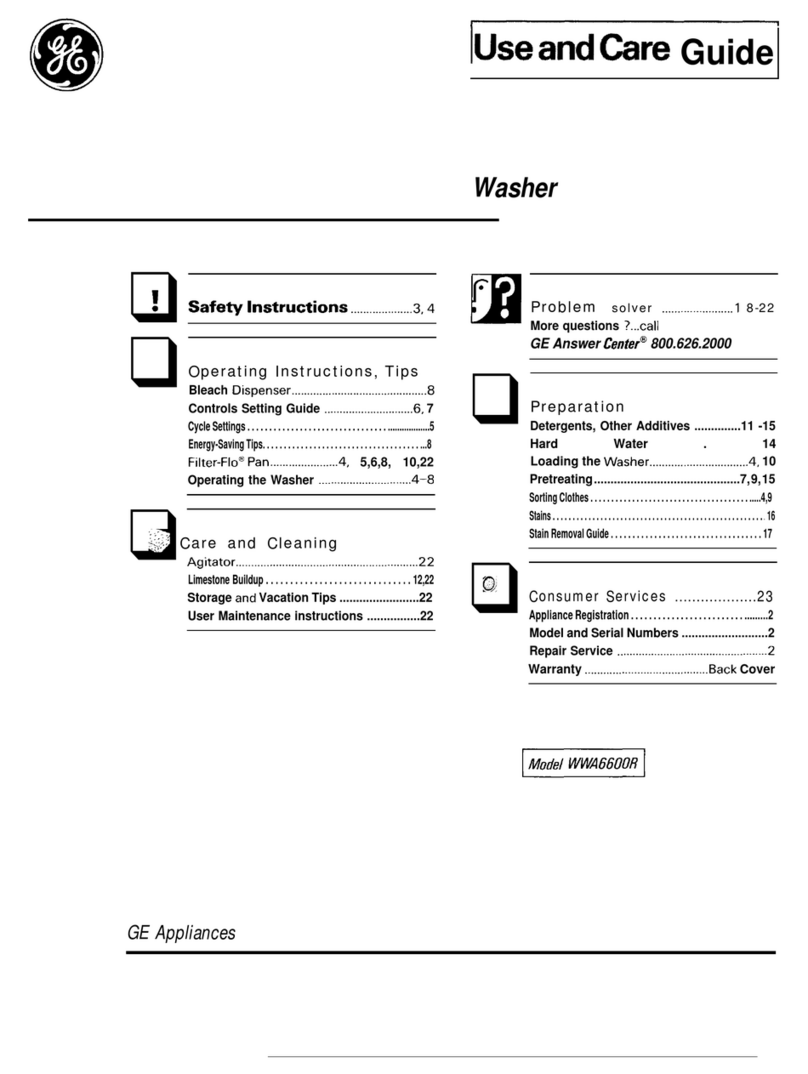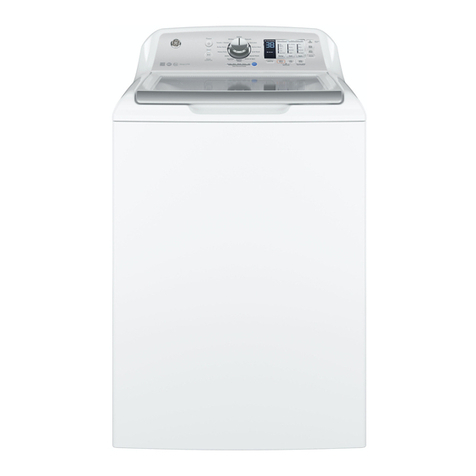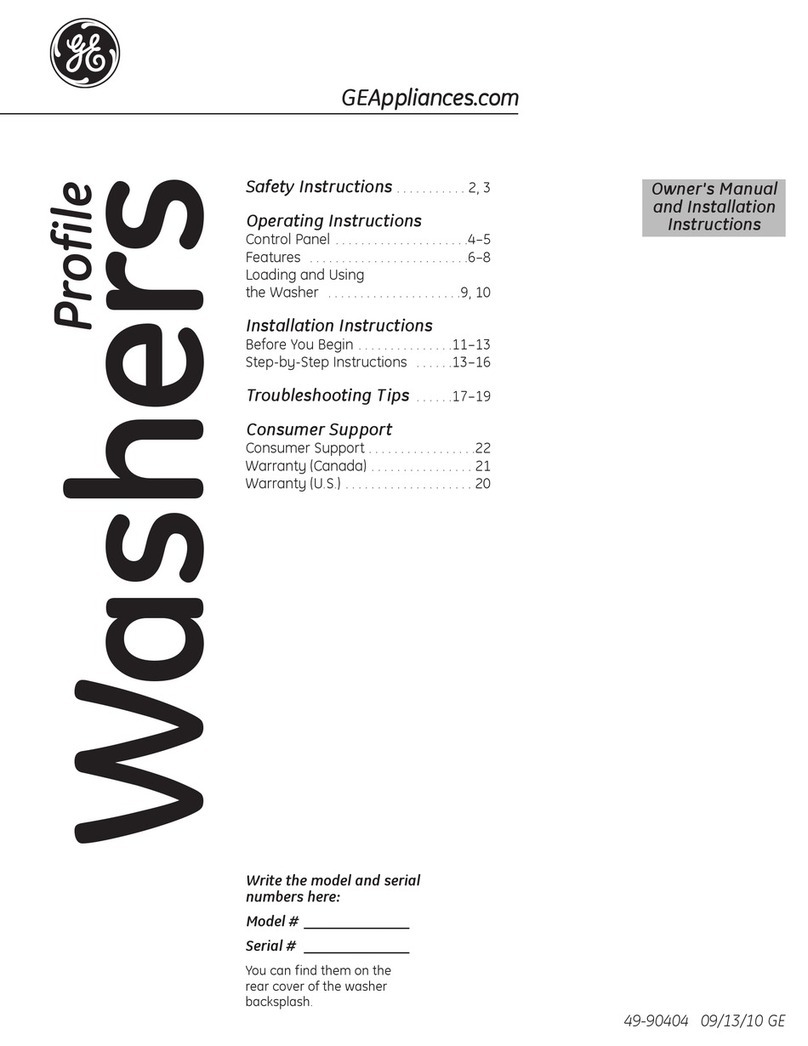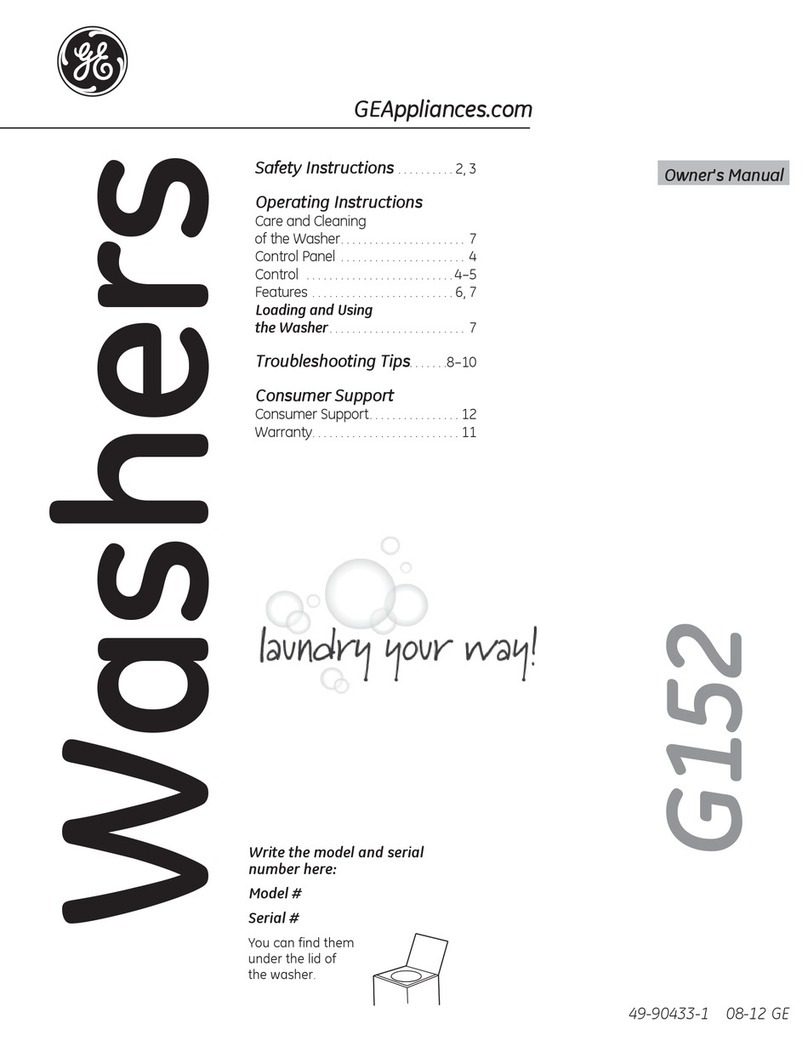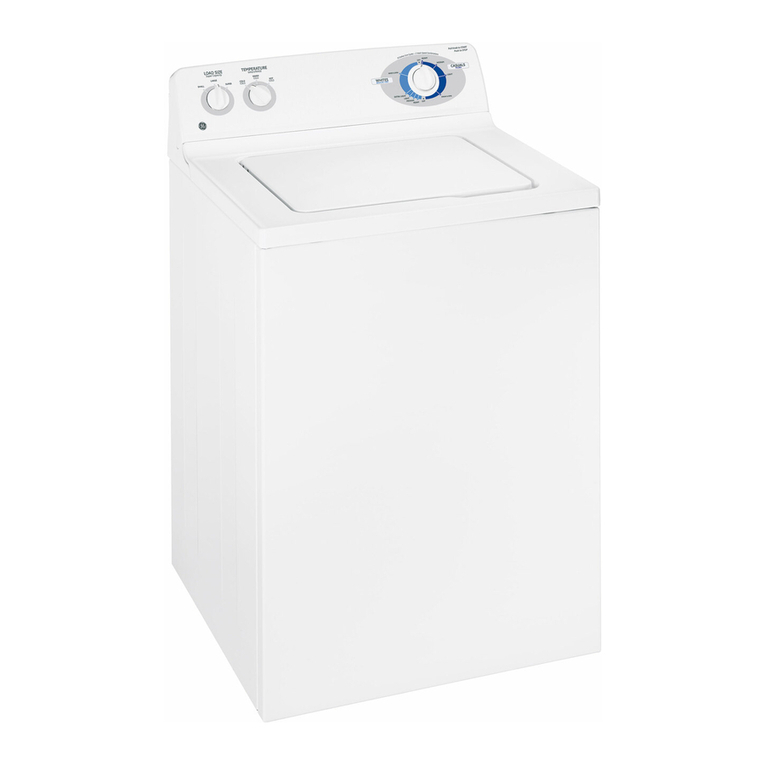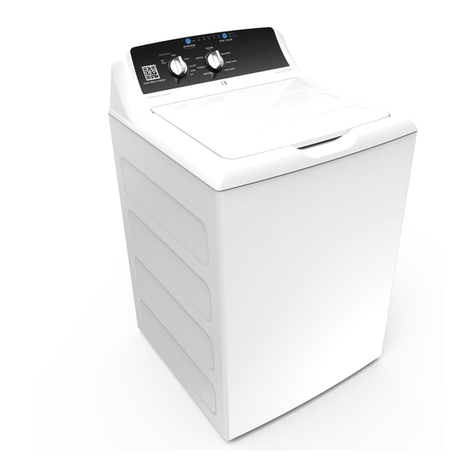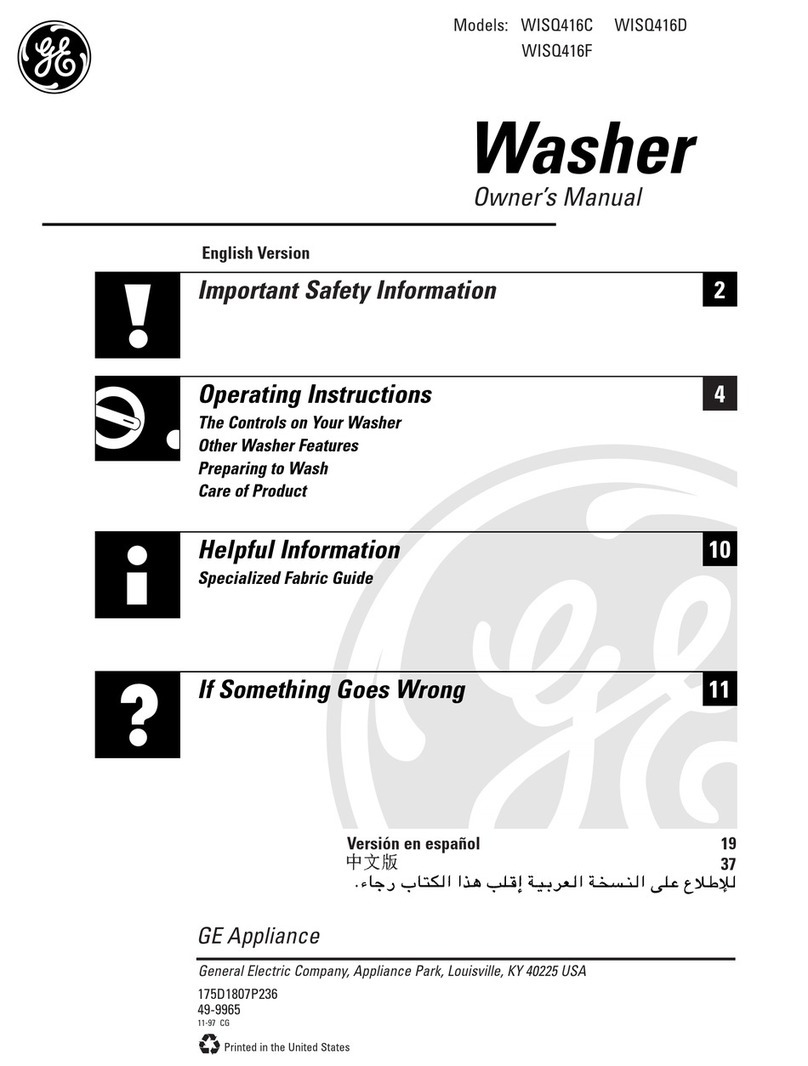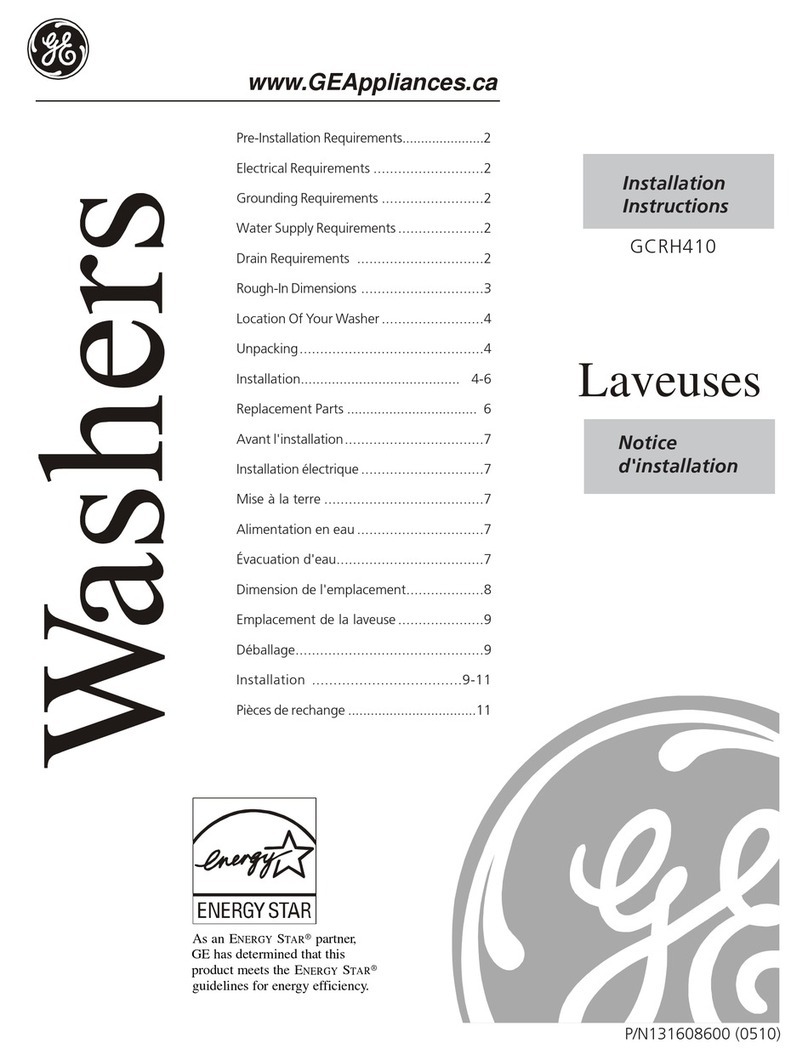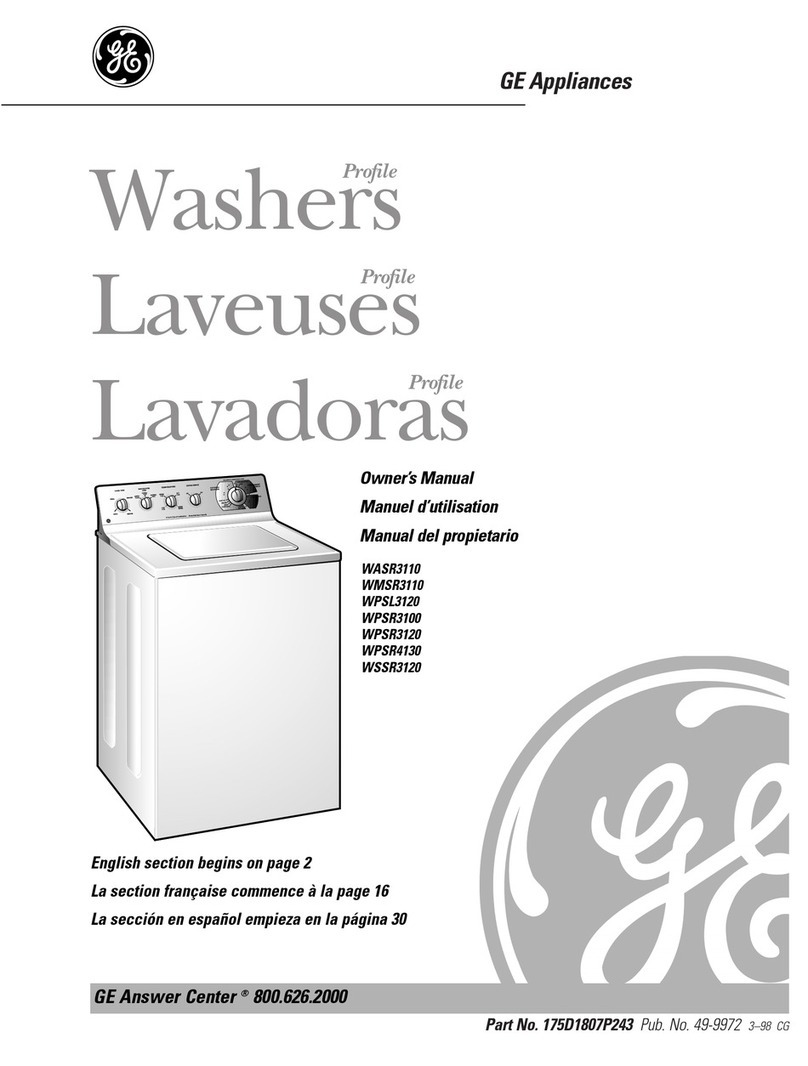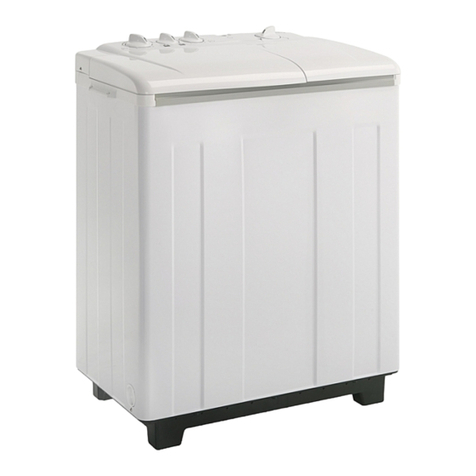
Throughout this manual, features and appearance may vary from your model.
4
Operating instructions.
A
B
Power
Press to “wake up” the display. If the display is active, press to put the washer into idle mode.
NOTE: Pressing Power does not disconnect the appliance from the power supply.
Start/Pause
Press Startto begin the cycle. NOTE: The lid must be closed for the washer to start the cycle. If the lid is open, “Lid” will scroll across the
display. If the lid is closed, the lid will lock, theLid Lock light will illuminate, and “SEnSing” will scroll across the display.
Pressing Pausewill unlock the lid (if locked at that time), pause the cycle and theStartindicator light will blink.
To continue the cycle, pressStartagain. If machine is paused more than 24 hours, the cycle will be cancelled. If water remains in the
machine, select the Drain & Spin cycle to drain basket and spin water out of the washer basket.
.rosufnIdnuorasmetiddaylesooL•
Overloading may negatively impact
wash performance. See page 9 for
suggested loading examples.
•Close lid.
NOTE: Washer will not start with lid
open.
Step 2 Step 3 Step 4
Step 1
• Select wash cycle.
• Select wash options,
including Deep Rinse option
when using fabric softener.
• Select options.
• Press Start.
• Add fabric softener to the fabric
softener dispenser; see page 10.
• Add the manufacturer’s recommended
amount of detergent. GE recommends
the use of High Efficiencydetergents
such as he in your energy efficient
washer. Place detergent pods in the
bottom of the wash basket before
adding clothes.
Lid Lock
Spin Stop
DC
A
BEFG
G
F
F
G
Display and Status Lights
Display: The display shows the approximatetime remaining until the end of the cycle.NOTE: The cycle time is affected by how long it takes
the washer to fill. This depends on the water pressure in your home. The size of the load being washed also significantly impacts cycle time,
with larger loads taking longer.
In addition, this display will, “scroll” the washer status:
• bALAnCINgStart of rebalancing cycle to redistribute clothes. Stops after rebalancing is complete.
• dELAY When Delay Wash is initiated. Replaced with estimated time when cycle starts.
• End End of current cycle.
• FILL For the first 45 seconds of a fill, the estimated end of cycle time is displayed. For the rest of the fill time, “FILL” is scrolled
.setelpmocllifehtlitnu
• H2O SUPPLY Can not sense water level (valves possibly turned off).
• LId Cycle stopped because lid is open. Close the lid.
• SEnSIng Sensing load size and type before and during fill (normal).
• PAUSE Cycle paused because the Start/Pausebutton was pressed and the washer was set to Pause. Press Startbutton again
to restart the cycle.
Cycle status lights: Shows whether the washer is in the Delay,Fill,Soak,Wash, Rinse or Spin portion of the cycle.
If an out-of-balance condition is detected by the washer, the Spin light will blink during the remaining portion of the cycle and will
stay illuminated for a short time after cycle completion. When this occurs, the washer is taking actions to correct the out-of-balance
condition and complete the cycle normally. In some cases, the washer may not be able to balance the load and spin up to full
speed. If you notice the load is more wet than normal at the end of the cycle, redistribute the load evenly in the wash basketand
run a Drain & Spin cycle.
C
Feature status lights indicate (see sections F and Gfor more details):
Pause - Will display when washer is paused between cycles.
Controls- The washer is locked - will blink once if you press any button or turn the cycle knob.
Lid Lock- The lid is locked. See the Control Lock description.
Spin Stop - Indicates wash basket is coasting to a stop following spin. Lid will not unlock until basket has fully come to a stop.
